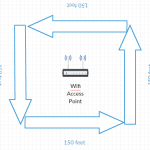“Hiroshima Child” Poem Analysis
“Hiroshima Child” Poem Analysis
Nazim Hikmet has written a sad poem titled “Hiroshima Child” regarding a seven year old girl, was died ruthlessly and marked the end of World War II. “This poem has gained a lot of success as an anti-war message and the theme is a call for peace. The poem describes the evils of war from the mouth of a little girl” (McKane 181). The poem deals with the tragic effects of was, loss of life, innocence and destruction. Nazim’s message with this poem is to stress that people need to work for peace.
Furthermore, this is a short poem of only five stanzas and the poet describes the experiences of a seven-year-old girl during the war. The deeper meaning is in the final stanza when he gives message that innocent children should be allowed to enjoy their childhood instead of killing them in the war. The tone is sad and expresses the true feelings of small girl but there is also a hope for peace.
Additionally, Nazim provide examples of strings in this poem. This poem is a good example in which many rhetoric devises are used extensively. Overall poet uses simple language. The art of metaphor is seen in strings, “Cannot even eat candy. The child who is burnt like paper.”(Ran 1). “Nazim has opted out of the simple expression by the art of analogy. In this case, the message of the poem gives the reader an easy opportunity to understand its meaning” (Otake 63).
Finally, this poem is very touching. Though it is a short poem but it uses imagery very well. It is really innovative that how Nazim has written from the point of view of a dead child. Poet delivered a very simple but serious message in a clear and short manner. No doubt, this is an example of impressive poetry.




